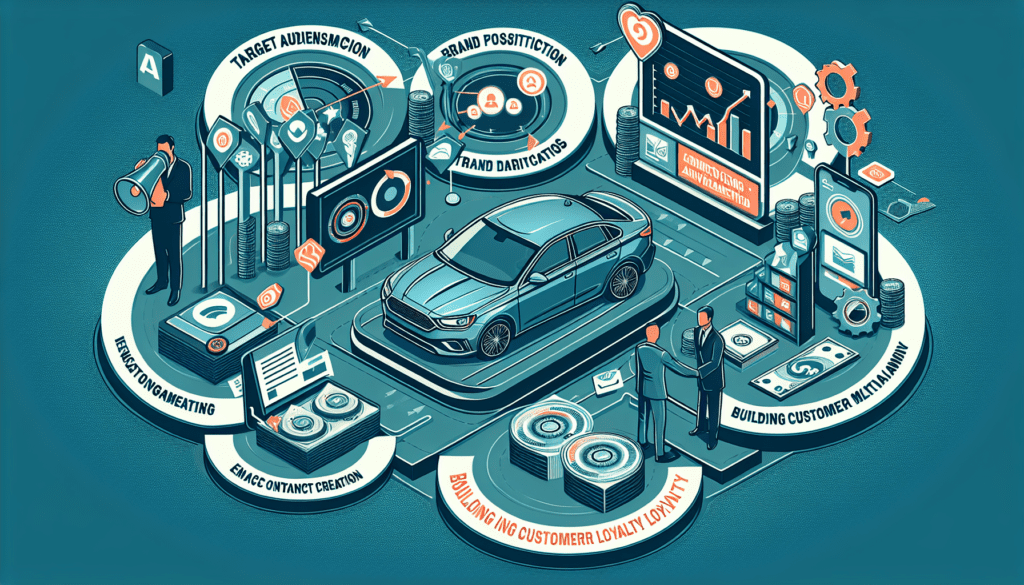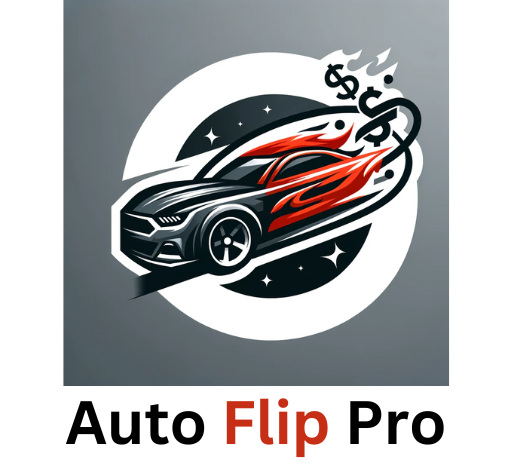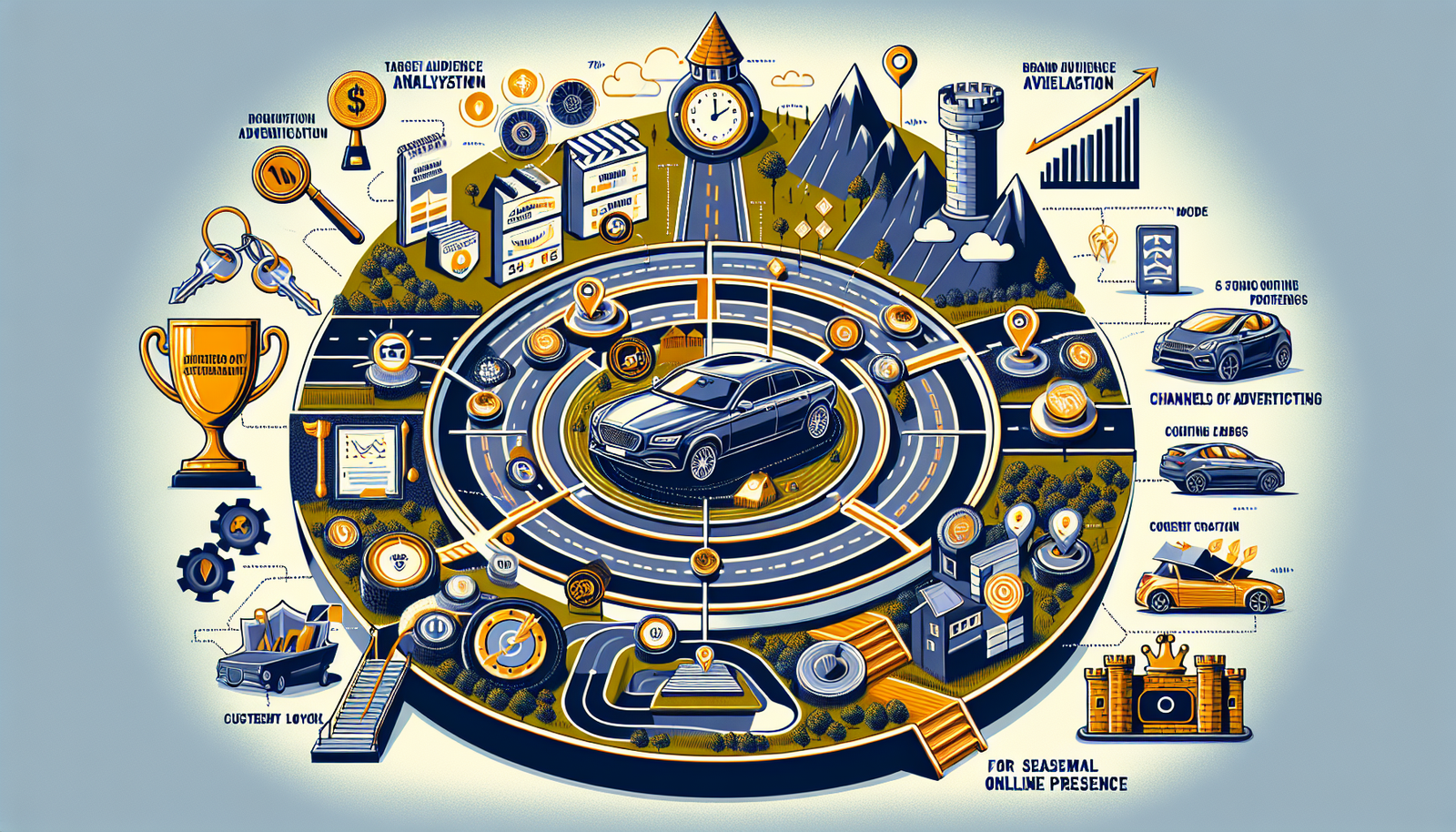You may wonder what it takes to create a successful car marketing strategy. In today’s competitive landscape, it is crucial to have an effective approach that captures the attention of potential customers and converts them into loyal buyers. From understanding your target audience to utilizing digital platforms, this article explores the essential elements that can make or break your car marketing strategy. So, buckle up, and let’s embark on a journey to uncover the secrets behind a winning marketing plan for the automotive industry.

Target Audience
Identifying target demographics
In order to develop a successful car marketing strategy, it is crucial to first identify your target audience. Understanding the demographics of your potential customers is essential for effectively tailoring your marketing efforts. This includes gathering data on age, gender, income level, location, and even lifestyle preferences. Performing market research and customer surveys can provide valuable insights into the specific characteristics and needs of your target audience.
Understanding consumer behavior
Once you have identified your target demographics, the next step is to gain a deeper understanding of consumer behavior. This includes studying their attitudes, motivations, buying habits, and preferences. By analyzing consumer behavior, you can develop marketing strategies that align with their needs and desires. For example, if your target audience values safety and reliability, you can emphasize these features in your car marketing campaigns.
Market segmentation
Market segmentation involves dividing your target audience into smaller, more manageable segments based on specific characteristics or preferences. This allows for more personalized and targeted marketing efforts. By tailoring your messaging and marketing channels to each segment, you can increase the effectiveness of your car marketing strategy. For instance, if you are targeting young professionals, you may focus on digital marketing channels like social media platforms to reach them more effectively.
Product Positioning
Differentiating from competitors
In a highly competitive market like the automotive industry, it is crucial to differentiate your product from competitors. Identify the unique features and benefits that set your cars apart and emphasize them in your marketing efforts. Whether it’s advanced safety technology, fuel efficiency, or luxury interiors, showcasing these unique selling points can help attract potential customers and give your brand a competitive edge.
Highlighting unique selling points
Highlighting your car’s unique selling points is essential to stand out in the market. Identify the key features and benefits that make your cars exceptional and emphasize them in your marketing messaging. Whether it’s innovative technology, superior performance, or exceptional design, showcasing these unique selling points can help create a strong brand identity and attract customers who value these specific qualities.
Creating emotional connections
To truly connect with your target audience, it’s important to go beyond highlighting functional benefits and create emotional connections. Focus on how your cars can enhance the lives of your customers and tap into their emotions. Whether it’s the exhilaration of driving performance, the sense of safety and security, or the pride of owning a luxurious vehicle, creating emotional connections can help build brand loyalty and drive customer engagement.
Brand Identity
Establishing brand values and personality
Establishing a clear brand identity is essential to differentiate your car brand and attract customers who resonate with your values. Define your brand values and personality by determining what your brand stands for and how you want to be perceived by customers. Whether it’s reliability, innovation, or sustainability, incorporating these values into your marketing messaging can help create a strong and consistent brand identity.
Creating a brand image
Creating a strong brand image goes beyond just a logo or tagline. It involves developing a comprehensive visual and verbal identity that is consistent across all marketing materials. From the design of your website and advertisements to the tone of voice in your messaging, every element should reflect your brand image. Consistency and coherence in your brand image help build brand recognition and trust among your target audience.
Consistent brand messaging
Consistency in brand messaging is crucial to establish brand recall and recognition. Ensure that all marketing materials, including advertisements, social media posts, and website content, are aligned with your brand values and personality. Consistent messaging helps reinforce your brand identity and avoids confusion among customers. It also builds trust and loyalty over time.
Effective Communication
Clear and compelling messaging
Effective communication is essential to engage your target audience. Ensure that your messaging is clear, concise, and compelling. Use language that your potential customers can easily understand and relate to. Highlight the unique features, benefits, and emotional connections that your cars offer. Engage your audience with persuasive content that addresses their needs and desires, ultimately encouraging them to take action.
Using various marketing channels
To reach a wide range of potential customers, it’s important to use various marketing channels. From social media platforms and search engine advertising to email marketing and content marketing, explore different channels that are relevant to your target audience. Each channel has its own unique advantages and allows you to connect with different segments of your target audience effectively.
Engaging storytelling
Storytelling is a powerful tool that can captivate and engage your target audience. Use storytelling techniques to create narratives around your cars, highlighting their features and benefits in a compelling way. Stories evoke emotions and allow customers to connect with your brand on a deeper level. Whether it’s through testimonials, user-generated content, or creative advertising campaigns, storytelling can make your car marketing strategy more memorable and impactful.

Market Research
Evaluating customer needs and preferences
Continuous market research is essential to keep up with changing customer needs and preferences. Regularly gather feedback from your existing customers and conduct surveys to uncover new insights. This will help you understand their evolving expectations and make informed decisions when developing and adjusting your car marketing strategies.
Monitoring market trends
Staying informed about market trends is crucial to adapt your car marketing strategy effectively. Keep an eye on industry publications, competitor activities, and emerging technologies to identify new opportunities and threats. By staying ahead of the curve, you can develop marketing strategies that are relevant and timely, capturing the attention of your target audience.
Analyzing competitor strategies
Analyzing competitor strategies can provide valuable insights into what is working and what can be improved in your own car marketing strategy. Identify your key competitors and study their marketing tactics, messaging, and customer engagement strategies. This will allow you to identify areas where you can differentiate your brand and find opportunities to outperform your competitors.
Digital Marketing
Harnessing the power of social media
Social media platforms offer a powerful tool for reaching and engaging with your target audience. Develop a strong social media presence by creating compelling content, engaging with your followers, and utilizing targeted advertising. From sharing product updates and customer testimonials to running contests and promotions, social media can help increase brand visibility and drive customer engagement.
Search engine optimization (SEO)
Search engine optimization (SEO) is essential to ensure that your car brand appears at the top of search engine results when potential customers are looking for information related to cars. Optimize your website and content with relevant keywords and phrases to improve your search rankings. By appearing on the first page of search results, you increase the chances of attracting organic traffic and generating leads.
Online advertising campaigns
Online advertising campaigns allow you to target specific demographics and reach a wider audience. Utilize display ads, Google Ads, and social media advertising to promote your cars. Develop compelling ad creative and use targeting options to reach customers who are most likely to be interested in your cars. Constantly monitor and optimize your online advertising campaigns to maximize their effectiveness and return on investment.
Traditional Advertising
Television and radio advertisements
Television and radio advertisements remain powerful channels for reaching a large audience. Develop creative and visually appealing TV and radio commercials that capture the attention of your target audience. Highlight your unique selling points and emotional connections in these ads to create an immediate impact. Ensure that your ads are memorable, relevant, and resonate with your target audience.
Print media campaigns
Despite the rise of digital marketing, print media still has its place in the advertising world. Develop print advertisements in relevant magazines and newspapers that are popular among your target audience. Use visually appealing graphics and persuasive copy to grab attention and convey your unique selling points. By strategically placing your print ads, you can reach potential customers who prefer physical publications over digital platforms.
Outdoor advertising
Outdoor advertising, such as billboards and transit ads, can create brand awareness and capture the attention of potential customers on the go. Choose strategic locations that have high traffic volume and visibility to maximize the reach of your outdoor ads. Ensure that the design and messaging are clear and captivating, as outdoor ads have limited time to make an impact.
Public Relations
Establishing media relations
Establishing strong media relations can help create positive publicity for your car brand. Build relationships with journalists and media outlets to increase your chances of getting coverage and positive reviews. Participate in industry events, conferences, and trade shows to connect with journalists who cover the automotive industry. Offer exclusive interviews and opportunities for media coverage to generate positive publicity and increase brand visibility.
Press releases and media coverage
Develop informative and newsworthy press releases to share important updates and announcements about your car brand. Distribute them to relevant media outlets and industry publications to increase the chances of media coverage. Use press releases to highlight new model releases, technological advancements, and other significant events related to your cars. Positive media coverage can enhance your brand reputation and attract potential customers.
Sponsorships and partnerships
Sponsorships and partnerships can help enhance your brand image and reach a wider audience. Collaborate with influential individuals or organizations that align with your brand values. This can include partnering with celebrities, sponsoring sports events, or supporting charitable causes. By associating your brand with reputable and respected entities, you can leverage their positive image and reach new customers.
Customer Relationships
Providing excellent customer service
Excellent customer service is crucial for building and maintaining strong customer relationships. Train your staff to be knowledgeable, friendly, and responsive to customer inquiries and concerns. Offer personalized assistance throughout the car purchasing process and beyond. By providing exceptional customer service, you can create a positive customer experience and foster customer loyalty.
Creating loyalty programs
Loyalty programs are effective in encouraging repeat business and creating brand advocates. Develop loyalty programs that offer rewards, discounts, or exclusive benefits to your loyal customers. This incentivizes them to continue purchasing and promoting your cars. By rewarding customers for their loyalty, you can strengthen customer relationships and increase customer lifetime value.
Encouraging customer feedback
Encourage customers to provide feedback and reviews about their experience with your cars. This can be done through surveys, online reviews, or social media platforms. Actively listen to customer feedback and make improvements based on their suggestions. By involving your customers in the decision-making process, you not only improve your cars but also demonstrate that their opinions are valued.
Performance Tracking
Setting measurable goals
Setting measurable goals is essential to track the effectiveness of your car marketing strategy. Define key performance indicators (KPIs) that align with your overall business objectives. These can include metrics such as website traffic, lead generation, conversion rates, and customer satisfaction. By setting specific and achievable goals, you can measure your progress and make data-driven decisions to optimize your marketing efforts.
Monitoring campaign effectiveness
Regularly monitor the effectiveness of your marketing campaigns by tracking key metrics and comparing them against your goals. Utilize analytics tools to gather data on website traffic, ad impressions, click-through rates, and conversion rates. This allows you to identify areas where your campaigns are performing well and areas that need improvement. By continuously monitoring campaign effectiveness, you can make timely adjustments and optimize your car marketing strategy.
Using analytics to refine strategies
Leverage analytics tools to gather insights and refine your car marketing strategies. Analyze customer behavior, demographics, and engagement patterns to identify areas of improvement. Use A/B testing to compare different marketing approaches and determine which ones yield the best results. By learning from data and adapting your strategies accordingly, you can continuously optimize your car marketing efforts and achieve better outcomes.
In conclusion, a successful car marketing strategy relies on understanding your target audience, positioning your product effectively, establishing a strong brand identity, effectively communicating with your customers, conducting market research, utilizing digital and traditional marketing channels, building media relations, fostering customer relationships, and tracking performance to refine strategies. By implementing these key elements, you can drive brand awareness, attract and retain customers, and ultimately achieve success in the competitive automotive industry.

